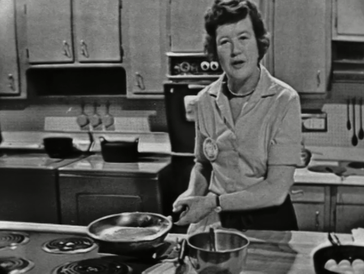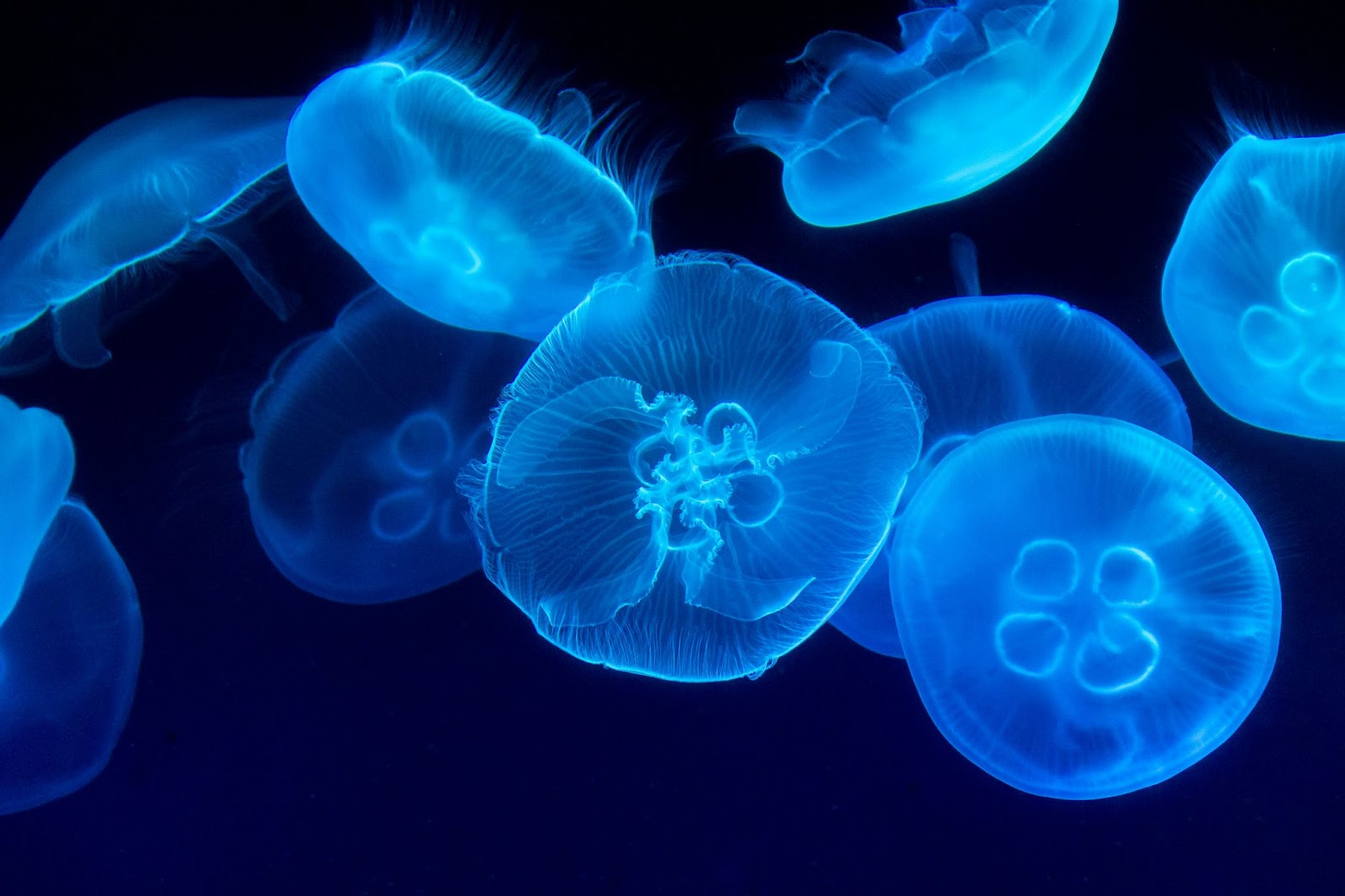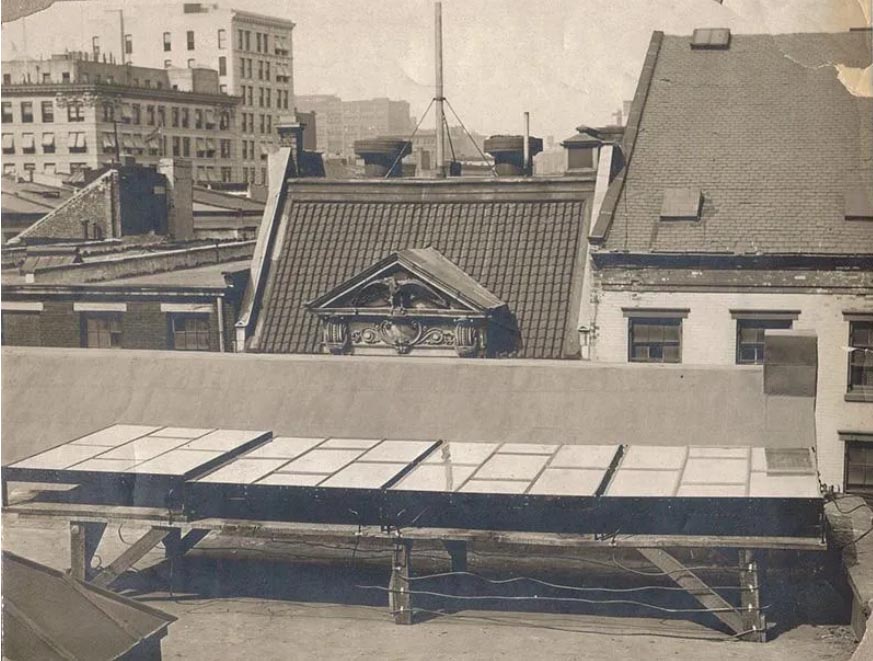01 November 2023, 10:58
By Kari Klaus, founder of RealtySage
Have you heard about jellyfish powering your home? Well, it’s a possibility! While you may think it’s far-fetched, the innovations in our homes today would have certainly seemed far-fetched to generations before us. So, when you reach for your Birds Eye frozen green beans to make your famous green bean casserole, or when you DVR that football game or ask Alexa how long you need to cook your turkey, you may want to take a moment to be thankful for the evolution of home innovations that have transformed the way we live, and for the cool and interesting things that we may see in the near future!
Check out these sections for the evolution of home innovations:
- Refrigeration; from straw to ice blocks to AI refrigerators
- Cooking; from fire to gas to microwaves to smart ovens
- TV & Radio; from radio to color TV to halograms
- Energy sources; from coal, to solar to jellyfish?
Refrigeration: It’s not just cool, it makes our lives so much better.
 “I’ll never forget how the term ‘icebox’ helped me to realize the generational differences and innovations happening in just my lifetime,” says Kari Klaus, Founder of RealtySage.
“I’ll never forget how the term ‘icebox’ helped me to realize the generational differences and innovations happening in just my lifetime,” says Kari Klaus, Founder of RealtySage.
My mother, who was born in the 1950s, refers to a “refrigerator” as an “icebox.” This was very confusing for me growing up. I recall an incident where this was especially problematic. My mother had asked my brother and I to pick up chicken from the grocery store after school and “to put it in the icebox right away” when we got home. When she came home from work and wanted to start making dinner, she asked us where the chicken was. We told her it was in the freezer. After all, she had told us that she wanted it in the “icebox.” Her generation, and those of her parents, used the term “icebox” to refer to the entire refrigerator, not the freezer portion, where ice is kept. Needless to say, dinner was super late, and we were very hungry that night as it took much longer to defrost the chicken before it could be cooked!
This photo is from the 1920s. Courtesy of the Sloane Collection.
A brief history of food preservation and refrigeration.
Back in the day, our ancestors had to get creative to keep their food fresh by storing perishables in ice cellars or pits lined with straw and ice blocks. And by the 19th century, iceboxes were popularized. These wooden wonders had compartments for ice blocks at the top and storage shelves below. And in order to keep the icebox cold, ice deliveries became commonplace – almost as common as your Amazon Prime deliveries are today!
But refrigeration was just one part of the equation for preserving food. New methods for freezing food to maintain its freshness was also part of the era’s innovation. That bag of frozen Birds Eye brand green beans for your holiday recipes is tasty because of an American inventor, Clarence Birdseye. According to Wikipedia, Clarence Birdseye (December 9, 1886 – October 7, 1956) is considered the founder of the modern frozen food industry.” As an American inventor, entrepreneur, and naturalist, he worked tirelessly on refrigeration and frozen food innovations throughout his lifetime. 
By the early 1900s, the electric refrigerator came into play, and in 1918, William C. Durant rolled out the Frigidaire, the first mass-produced fridge. Finally, no more chasing ice delivery trucks. And post-World War II, fridges got fancy with automatic defrosting, which meant no more ice chiseling sessions to get rid of built-up frost. The 1970s energy crisis sparked the birth of energy-efficient fridges. Side-by-side and bottom-freezer designs made space for all those frozen pizzas.
If you still prefer the look of a retro fridge, but with modern technology and efficiency, the Bill Chill company has a line of fun retro appliances that can bring back the whimsy of a 1950s colorful kitchen but with all the bells and whistles of today’s convenience.
Retro-looking modern fridge from Bill Chill
Smart refrigerators:
Today, smart refrigerators are the cool kids on the block. Yes, that was a pun! They can be controlled remotely, have advanced cooling systems, and are energy-efficient. Your fridge can now send you a grocery list - talk about a smart appliance! Recent innovations focus on sustainability, with eco-friendly refrigerants and energy-saving features.

Beyond smart: Refrigerators with artificial intelligence
AI-powered food management is being integrated now and will soon become commonplace in the next few years. According to
Electrafix, “As early as January 2, 2020, Samsung and LG showcased updated versions of the
Family Hub and second-generation InstaView ThinQ fridges - both of which are set to tout AI-equipped cameras that can recognize food inside and let users know what items they're short on, even making meal suggestions based on the ingredients they still have. Perhaps eventually, such fridges will be capable of analyzing food in terms of freshness (as the ultimate food safety tool). This would definitely be helpful – as would a self-cleaning fridge.” View these
smart and energy efficient refrigerators.
The Evolution of Cooking Appliances - A Culinary Journey

So keeping food cold is great, but what about cooking it? Since the dawn of mankind, we have been cooking with fire. But in just the last 100 years, our cooking options have really heated up.
Julia Child demonstrating how to cook an omelette on the first season of The French Chef. Photo credit: wikipedia
The evolution of cooking appliances is a vivid testament to human innovation, tracing back from the ancient utilization of open fires, stones, and clay pots, to the 18th-century introduction of wood-burning stoves. Back then, it was all about fire - collecting some fuel to burn so we could heat food to kill bacteria and turn our onions into a caramelized delight.
Fuel sources have changed rapidly.
Wood and coal are easy to burn, but require a lot of mining, cutting down trees, not to mention the noticeable air pollution. So the introduction of gas stoves was a major improvement. By the 1920s, gas ovens were used in most domestic kitchens because they were smaller, lighter, didn’t have that pesky smoke, and needn't be constantly heated, like a charcoal stove, freeing up a lot of time that women would otherwise need to spend to keep the stove going, or cleaning up ash. You may hear the saying “now you’re cooking with gas,” but you might not know that advertising slogan started back in the 1930’s!
But gas has been in constant competition with electricity, which by the 1930s started to compete more effectively. Electric didn’t have the dangerous open flame. It heated more quickly, was easier to control temperatures, and didn’t have the danger of leaking gas. But many houses didn’t have enough electric current, and it wasn’t until the 70’s when electric finally caught up to gas stoves.
But perhaps the biggest innovation and one that is indispensable today is the microwave oven. In 1945, Dr. Percy Spencer, an engineer for Raytheon, discovered the principle of microwave cooking. He was standing in front of a microwave tube when he noticed that a chocolate bar in his pocket had melted while his jacket stayed cool (Rubin, 1998, p. 38). It took until the 80’s for microwaves to be inexpensive, small, and convenient enough to be used in homes, but in less than 20 years, 96% of American homes had a microwave.

First generation microwave oven circa 1955. Photo credit: Wired
Do you remember when your family got its first microwave?
“I remember when I was a foreign exchange student to Spain in 1995.” Kari Klaus recalls, “One of my host families decided to buy a microwave, one of the first in the small village. They brought me “The American” into the kitchen with huge smiles and asked me to show them how to cook food with it. Sadly, I told them that while some people do cook food in them, most people use them to either heat up food that was already cooked on the stove or for TV dinners, which were not known at the time in the village. I had explained that making Spanish paella in the microwave would probably not turn out very well, but heating up their leftovers the next day would be much more efficient!
Fun fact - did you know microwave ovens actually don’t heat food - they heat the water in the food, and the food itself is heated up by the water. That’s why cooking with microwaves can be inconsistent for some foods, and dryer foods will take longer to cook.
Efficiency keeps getting better
At each step in innovation, the ability to cook foods with less energy has gotten better. Gas cooktops are about 40% efficient, electric-coil and standard smooth-top electric cooktops are about 74% efficient, and newer induction cooktops are about 84% percent efficient.
Of course electricity has to come from somewhere, but even when it comes from a modern combined cycle natural gas power plant, electric and induction still come out on top. If you get your power from a utility that uses renewable energy sources, or even better have your own solar power generation, you get the benefits of better efficiency and less greenhouse gas emissions from your stove.
Technology keeps marching on too! Air fryers are another quick and energy-efficient countertop appliance that churns out markedly better results for many foods than microwaves. Smart ovens promise to cook foods perfectly, even when you’re not at home. We’ve come a long way from cleaning out the ash every time you had a hankering for a cup of coffee!
The Evolution of Radio and Television
The evolution of radio and television has been a captivating plot filled with twists, turns, and exciting innovations. In the early 20th century, radio emerged as a revolutionary communication tool, akin to a pre-internet era marvel, transforming how information was shared and consumed.
 Radio brings communications into the home for everyone
Radio brings communications into the home for everyone
In the 1930s and 1940s, the golden age of radio had arrived, becoming the Netflix of its time, as families huddled around the radio for entertainment. Radio helped to bring news, stories and entertainment to a much larger population and it didn’t matter if you were old or young or what your level of literacy was. It was also a shared experience.
Photo credit: Wikipedia
The evolution of the TV
The late 1920s saw the advent of television, adding visuals to storytelling and captivating home audiences further. And over the next few decades TV continued to innovate with the introduction of color television and the remote control, enriching the viewing experience and definitely adding convenience. By the late 20th century, cable and satellite TV came into homes, greatly expanding choices and ushering in an era of endless entertainment. The 2000s marked a significant transition to digital broadcasting, dramatically improving image and sound quality.
Streaming
In the 21st century, internet streaming services such as Netflix and Hulu became prevalent, making binge-watching a new lifestyle trend. Today, smart TVs dominate, offering internet connectivity, app integration such as voice control, and personalized show recommendations.
 The future of TV?
The future of TV?
How about a TV that brings a StarTrek’s “Beam me up, Scotty,” right to your living room? Hologram TVs are a possibility. According to Hypervsn, “Holograms offer a unique viewing experience that is unlike anything we’ve seen before. With holograms, viewers can experience a virtual reality without the need for special headsets or glasses.”
From the birth of radio to the contemporary smart TV, these mediums have continuously shaped our culture, keeping us both informed and entertained.
How we power our homes
The evolution of energy in homes to make all these other innovations work has come a very long way from wood to the sun and to even jellyfish?!
 The evolution of energy sources:
The evolution of energy sources:Solar-powered energy in the 1800s? Yep! But long before solar began appearing on rooftops around the world, the Industrial Revolution first popularized coal. However, coal also introduced numerous detrimental environmental and health impacts such as lung diseases, air pollution and environmental contamination to name a few. By the 20th century, oil-based heating systems became prevalent, although these kept homeowners at the mercy of fluctuating oil prices. Natural gas emerged as a cleaner and more efficient alternative, however the U.S. Energy Information Administration (EIA) estimates that in 2021, U.S. CO2 emissions from natural gas combustion for energy accounted for about 34% of total U.S. energy-related CO2 emissions contributing to climate change.
The search for more efficient and less environmentally detrimental power sources continued. And, while you may think that renewable energy such as solar power is new, it actually has a much longer history.
Photo by Marat Gilyadzinov on Unsplash
The history of renewable energy:
Solar panels have been gaining popularity since the early 2000s, but the idea for harnessing the power from the sun actually dates back to the 1800s. According to the Smithsonian Magazine, Edmond Becquerel’s discovery of the photovoltaic effect dates back to 1839 and some of the first solar power patents appeared in the late 1800s. These early efforts laid the groundwork for today’s solar innovations.

Charles Fritts installed the first solar panels on a New York City rooftop in 1884. Photo courtesy of John Perlin and Smithsonian Magazine.
The future of solar and other renewable energy sources:
The 21st century now brings us even more renewable energy innovations. Have you heard of spray-on solar panels? This innovation could potentially turn our walls into energy generators! But solar is far from the only possibility for renewable energy. All the Saturday Night Dance Fever and TikTok fans can rejoice -- new technology is aiming to harness the power from dancing on “energy floors.”
If you have two left feet, and dancing isn’t your thing, then maybe harnessing the energy from the ocean is more interesting to you. It’s known as “ocean energy.” Ocean energy can take on many forms. There is wave energy, which harnesses the kinetic energy from ocean waves as they move across the surface, or current energy which harnesses the various ocean currents like the gulf stream. And then there are underwater wind turbines, similar to the land-based ones. All these are capturing the power of ocean water movement.
But there’s even more exciting innovations happening in the ocean, including how scientists are working on the potential of algae being converted into clean biofuels. Meanwhile, other innovators are looking at how the proteins, which cause jellyfish to glow, could help to create a more environmentally friendly form of solar power, instead of photovoltaic cells.
 Photo by Edward Howell on Unsplash
Photo by Edward Howell on Unsplash
As we continue to innovate, the focus remains on creating sustainable, efficient, and environmentally friendly energy solutions for our homes and it seems that we are just getting started with all the opportunities!
So let's express our gratitude for the remarkable advancements that have shaped our homes, the innovation that is happening in our own lifetimes, while we look to a future where dancing and jellyfish might just power our lives and our tech gadgets.
Back to news
